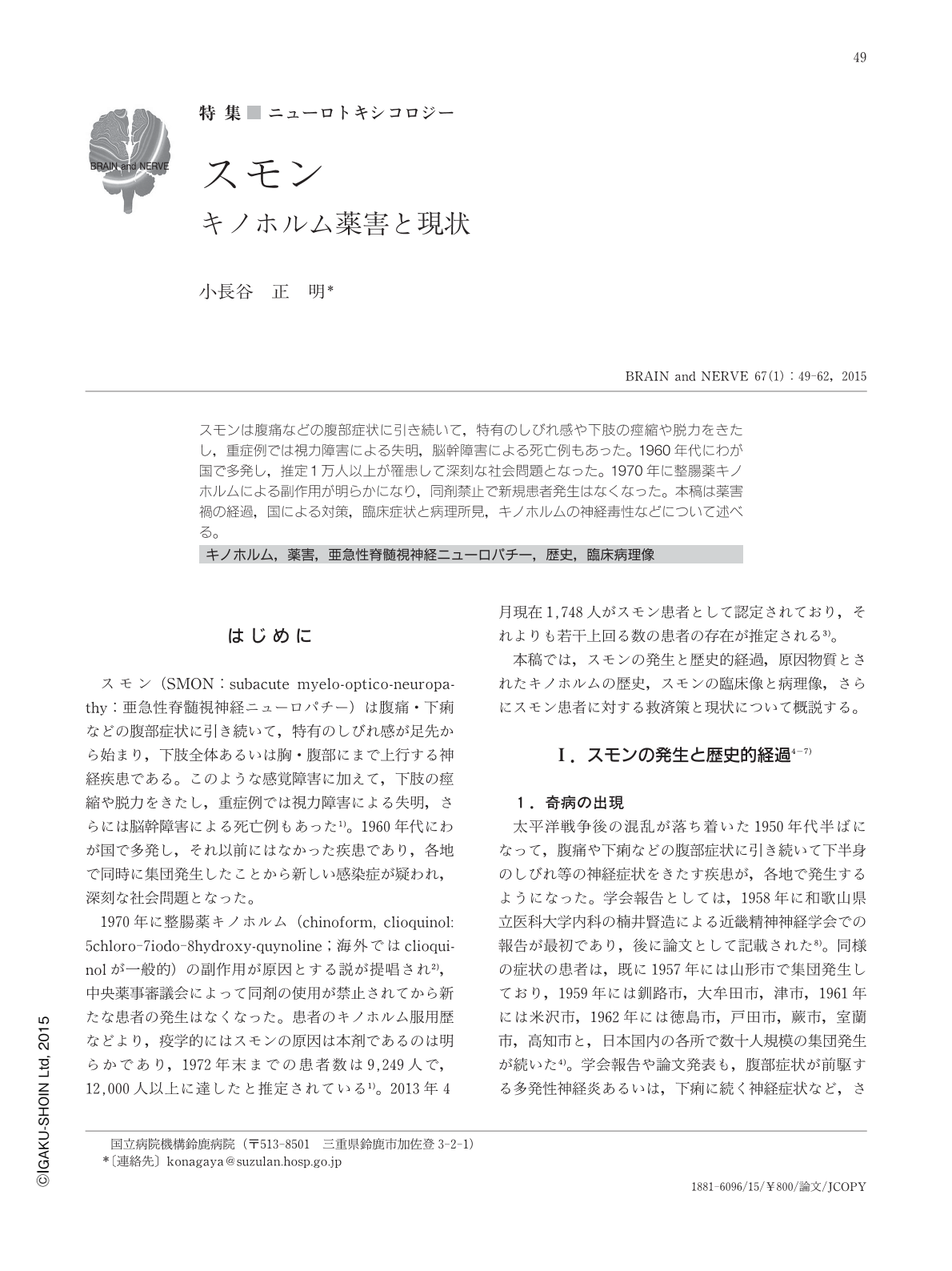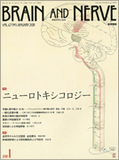Japanese
English
- 有料閲覧
- Abstract 文献概要
- 1ページ目 Look Inside
- 参考文献 Reference
- サイト内被引用 Cited by
スモンは腹痛などの腹部症状に引き続いて,特有のしびれ感や下肢の痙縮や脱力をきたし,重症例では視力障害による失明,脳幹障害による死亡例もあった。1960年代にわが国で多発し,推定1万人以上が罹患して深刻な社会問題となった。1970年に整腸薬キノホルムによる副作用が明らかになり,同剤禁止で新規患者発生はなくなった。本稿は薬害禍の経過,国による対策,臨床症状と病理所見,キノホルムの神経毒性などについて述べる。
Abstract
Subacute myelo-optico-neuropathy (SMON) is a disease characterized by subacute onset of sensory and motor disorders in the lower half of the body and visual impairment preceded by abdominal symptoms. A large number of SMON were observed throughout Japan, and the total number of cases reached nearly 10,000 by 1970.
Despite clinical features mimicking infection or multiple sclerosis, SMON was confirmed as being caused by ingestion of clioquinol, an intestinal antibacterial drug, based on extensive epidemiological studies. After the governmental ban on the use of clioquinol in September 1970, there was a dramatic disappearance of new case of SMON.
In the 1970s, patients with SMON initiated legal actions against the Government and pharmaceutical companies, and the court ruled that the settlements would be made as health management allowances and lasting medical check-ups.
The physical condition of patients with SMON remains severe owing to SMON as well as gerontological complications.
The pathological findings in patients with SMON included symmetrical demyelination in the lateral and posterior funiculi of the spinal cord and severe demyelination of the optic nerve in patients with blindness.
Although clioquinol may show activity against Alzheimer's disease or malignancy, its toxic effects cause severe irreversible neurological sequelae. Thus, caution must be exercised in the clinical use of clioquinol.

Copyright © 2015, Igaku-Shoin Ltd. All rights reserved.


